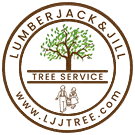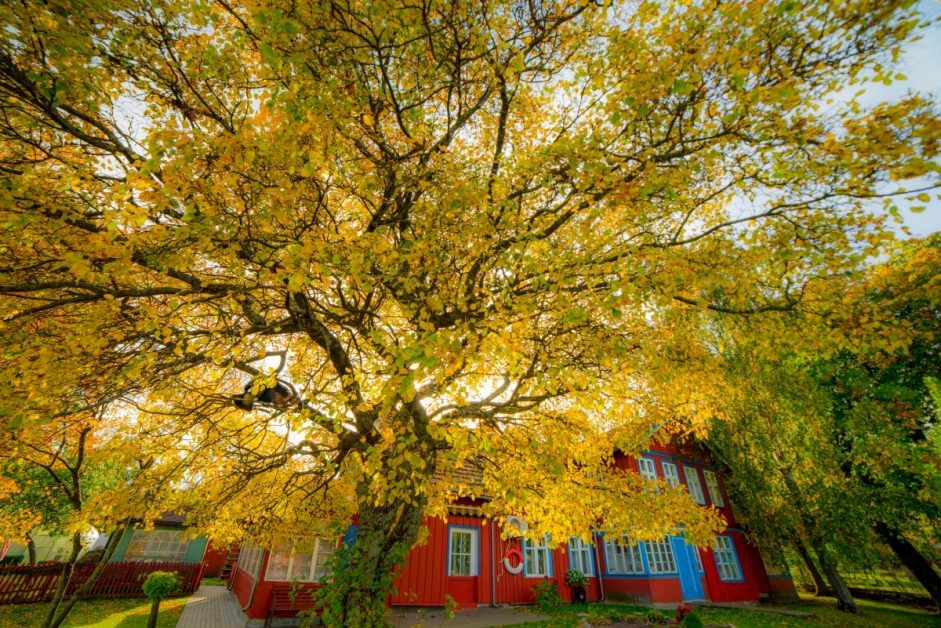If you’ve noticed that trees throughout your property aren’t healthy, it’s likely that the leaves of your trees will be the first sign that catches your eye. After all, if you notice brown leaves or a barren branch or two, common sense tells us that something is wrong. So, what are your tree’s leaves trying to tell you? And what can you do to aid the health of your trees? Well, we have the answers to those questions and more. Below, we’ve outlined some common signs of poor tree health, and what you can do to turn things around. And as always, if you still can’t find the solution to help your trees thrive, you can count on Northern Colorado’s tree care experts here at Lumber Jack and Jill’s. We provide tree care services for folks across the Front Range, including residents of Fort Collins, Wellington, and Loveland.
Blotches of Yellow and Brown
If your leaves aren’t green, then they aren’t healthy (unless, of course, it’s fall). If you have leaves with blotches of yellow and brown, then it’s likely that your tree isn’t getting enough water. That’s a common occurrence here in Colorado, where droughts can last for the whole growing season. If you’re concerned that you are underwatering your trees, you can check the soil around your trees (dig a few inches into the soil to feel if it is wet to the touch). You can also feel the leaves of your tree. If they feel dry and thin, then overwatering may be the issue at hand.
To remedy the situation, be sure to water your tree’s soil thoroughly. Also, spray the leaves of your trees in the midday heat if you’re worried that the leaves may be overheating — a bit of evaporation will cool the leaves and provide a touch more water.
Burnt-Looking Leaves
Do your trees look as if they are burnt? While you may think that that is an indicator of underwatering, it’s likely that your tree is infected with a bacterial disease called fire blight. This disease can kill off leaves quickly, and it will eventually work its way from the tips of your branches towards the trunk of the tree, killing off tree cells as it grows.
If you see burnt-looking leaves, be sure to cut away dead and dying material around your tree. Cut off the whole of the branch if it is infected, to ensure that you get all of the bacterial growth. Take note, you should not compost these branches and leaves (since you’ll spread the infection to all of the material in your compost), and you should clean your loppers and pruners (or any tools that you use) after cutting away infected material — otherwise, you could infect other trees or re-infect your tree if you use the same tools.
Barren Branches
If your branches no longer grow leaves, it is an indicator that the branch is already dead. You may also notice that the branch is colored (often turning grey or black), Your tree may be underwatered, it may have a bacterial or fungal infection, it may be nearing the end of its life, or it may not have access to the nutrients it needs to survive (you may have poor soil surrounding the tree). You might have to contact an arborist to determine the root of the problem at hand.
In the meantime, you should lop these branches off of your tree to ensure that they don’t cause additional problems. Dead branches can cause an infection, and they can still sap water and nutrients from the soil — giving other branches less of a chance to thrive.
Yellowing Leaves
While yellowing may be an indication that your tree isn’t getting enough water, it may also indicate that your tree isn’t getting the nutrients it requires to grow properly. Take a keen look at your leaves. Do they have yellow splotches? Or are the leaves yellowing from the outside of the leaf towards the stem and veins? If the yellowing is occurring from the outside-in, then it’s likely that your tree isn’t getting the proper balance of nutrients from the soil. Trees require a variety of minerals and nutrients to thrive, and the soil should have a balanced pH as well.
We suggest that you test your soil to check on its nutrient content. You may have low levels of manganese, iron, phosphorus, or nitrogen. You may also have an unbalanced pH level. You can treat the soil around your tree with a variety of fertilizers and pH balancers that will ensure that your tree’s roots get the stuff they need to grow. If you can’t assess the issue at hand yourself, seek out an arborist.
Spots
Spots can crop on your leaves if you have a fungal infection or pest infestation. In these instances, you may see green, yellow, or brown spots, and you may even see growths in these areas. Diseases and pests can take hold of your leaves, leaving your tree at risk of damage or a full infestation. It’s best to treat the infection or infestation right away or to lop off any affected branches before the problem spreads.
Holes and Damage
If something is eating your tree’s leaves, you’ll notice holes and damage across their surfaces. Keep an eye out for holes or damage that looks like a bug is devouring your leaves. You may notice patterns caused by caterpillars that are devouring your leaves, or you may see brown droppings on your leaves — depending on the species that has made your tree it’s home.
Some pests can and should be treated to ensure that your tree remains healthy. Other insects will only eat a bit of your tree and move on, so treatment may not be necessary. Speak to an arborist if it appears that insects are harming the health of your tree.
Get Tree Care From a Certified Arborist
If your tree’s leaves are less than healthy and you can’t figure out the issue at hand, we’d be happy to take a look. Here at Lumber Jack and Jill, we have an International Society of Arboriculture certified arborist on staff. That means that we have the knowledge necessary to assess your tree’s health and to provide you with solutions to problems that may harm your tree. Beyond our arborist services, we’re proud to provide a litany of tree care services for our neighbors throughout Northern Colorado, and we’d be happy to help you take care of your trees. Reach out to us to learn more about what we can do to improve the health of the trees throughout your landscape!

